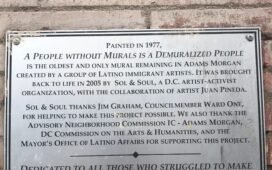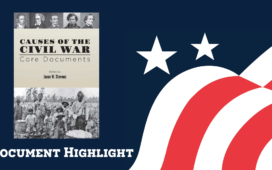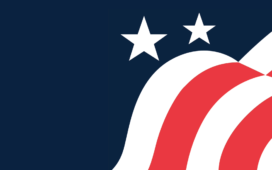By Dr. Brenna Spray, MHT/MHAA Outreach & Communications Officer
In the hills of Frederick County, stories once spread of a winged monster with a metallic beak, piercing claws, and a taste for blood. Called the Snallygaster, this part-bird, part-reptile creature with a single eye and coiling tentacles is often linked to the German phrase schneller geist (“quick spirit”), though its connection is linguistic rather than folkloric as no such creature exists in German tradition. Still, its spectral habits echo older tales of the Wild Hunt brought by German immigrants in the 18th century. The Snallygaster’s supposed Old-World roots help explain its eerie name. Yet no firm record of such a creature appears in early Maryland or European sources, suggesting that, like many American legends, it took root later, evolving from a blend of immigrant storytelling, isolation, and local imagination.
This story is more than a tall tale. It is part of Maryland’s intangible cultural heritage, showing how folklore, like historic buildings, can preserve community memory across centuries. Folklore carries with it not only fear and wonder, but also the imprint of the people who told it and the society that shaped it. And, like all living traditions, the tale itself could not stay still – it morphed with every retelling, carrying the echoes of old fears into new times.
Fear in Print: The 1909 Hoax
By the early 20th century, fear that had once circulated in oral storytelling found new power in print. In 1909, the legend surfaced in the Middletown Valley Register, which ran sensational accounts of a one-eyed, winged beast terrorizing Frederick County. Reports claimed that the Smithsonian was investigating and that President Theodore Roosevelt might join the hunt. Families in Maryland painted seven-pointed stars – hex signs that are thought to go back to 18th century Pennsylvania Dutch – on their buildings as protection against the monster’s shrieks, glowing eyes, and swooping attacks. Through these rituals of protection, communities sought not only comfort but also a measure of power over the unpredictable, turning fear itself into a form of order.
Within this series, the Register also introduced a deeply racialized twist, claiming that the creature “only attacks colored people” and tracing its supposed origin to Africa’s Senegambia region. This adaptation of folklore into racist sensationalism turned myth into a tool of oppression, using fear to enforce the hierarchies of the Jim Crow era.
When Fear Works Both Ways
Though the 1909 Snallygaster craze was largely a newspaper hoax to boost sales, it drew power from deeper currents of fear and control in Maryland’s history. Those same fears could be turned to new ends. During Prohibition, moonshiners in South Mountain used the stories of the Snallygaster to scare away revenue agents and explain the eerie sounds of their stills. As explosions and metallic screeches echoes through the hills, stories of a winged beast carrying off men multiplied. In this way, the same folklore once used to intimidate became a shield to protect through shared superstition.
The Monster We Made
Today, the Snallygaster appears in festivals, pop culture, and even video games. While modern retellings tend to emphasize its mystery and oddity, remembering the legend’s more complicated past adds depth to a story that is still very much alive. Its evolution – from whispered warning to newspaper hoax to folk festival mascot – illustrates how each generation constantly reinterprets intangible heritage.
Preserving stories like the Snallygaster is as vital as saving courthouses, farmsteads, and shipwrecks, ensuring that not only what we can see but also what we once believed, feared, and used to shape our communities remains part of Maryland’s shared history.
Folklore, Fear, and the Archeology of Belief
The Snallygaster is truly a Maryland invention, molded by the anxieties of settlers on the Appalachian frontier, blending European fears of witches and spirits with local tensions over slavery, race, and the wilderness that lay just beyond cleared fields. This mixture of Old World folklore and New World power dynamics produced a monster unique to central Maryland – at once a fantastical predator and a social weapon.
Although we have no evidence of monsters like the Snallygaster, folklore and material culture often overlap in Maryland’s history. Just like families in the region painted seven-pointed stars on barns to ward off evil, in other parts of the state, archaeologists have unearthed concealed shoes, witch bottles, and other ritual objects buried beneath thresholds or hearths – quiet expressions of the same impulse to protect home and family from unseen forces. These finds reveal traces of belief and fear not only in stories but in the ground itself, forming a bridge between intangible and tangible heritage. For more on the archeology of magic and superstition in Maryland, see The Magic and Mystery of Maryland Archeology from Maryland Archeology Month 2019.
References
American Snallygaster Museum. www.snallygastermuseum.com/
Appalachian History. “It’s Snallygaster!” November 2018. www.appalachianhistory.net/2018/11/its-snallygaster.html
Baltimore Fishbowl. “When the Snallygaster Came Calling.” October 2019. baltimorefishbowl.com/stories/when-the-snallygaster-came-calling/
Boyton, Patrick. Snallygaster: The Lost Legend of Frederick County. 2011.
Library of Congress. “American Cryptids: Monsters of the Newspapers.” October 2022. ttps://blogs.loc.gov/headlinesandheroes/2022/10/american-cryptids/
“Maryland’s Snallygaster: Devil of Racist Politics.” WETA / Boundary Stones. December 2024. boundarystones.weta.org/2024/12/04/maryland-snallygaster-devil-racist-politics
“The Unsettling Legend of Maryland’s Native Cryptid, the Snallygaster.” Atlas Obscura. October 2022. www.atlasobscura.com/articles/what-is-the-snallygaster
Discover more from Our History, Our Heritage
Subscribe to get the latest posts sent to your email.




















